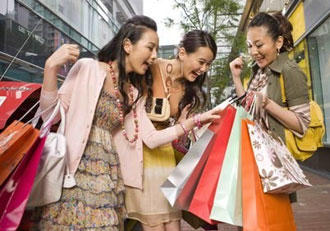China isn’t nearly as important a luxury goods market as might be supposed from recent media coverage, according to data contained in a report released Monday by Bain & Company.
China’s luxury goods consumption this year is projected to be only about a quarter of the €62.5 billion ($86.0 bil.) by the US, and less than the €17.2 bil. ($23.7 bil.) by second-place Japan and the €16.1 bil. ($22.2 bil.) by third-place Italy. China’s luxury goods market is projected to hit just €15.3 bil. ($21.1 bil.) this year.
The reason for the earlier hype about Chinese luxury goods consumption is that during the past few years it had been growing at a double-digit rate while those of other top nations had been shrinking due to the global recession.
As of this year Xi Jinping’s crackdown on corruption and the conspicuous consumption that goes with it has caused China’s luxury market growth rate to plunge to just 2.5%. But even that’s enough to let it overtake France for the number four spot.
The sudden slowdown in China’s luxury goods consumption is having a seismic impact on the global luxury goods market which had been counting on it to make up for the slowdown in the world’s advanced nations caused by both the economy and a shift in consumer interest toward smartphones and other tech products.
Now China’s consumers too aren’t quite as eager to show off their wealth by sporting designer labels, status bags and luxury watches. That sector is expected to grow even more slowly, at only 2% this year. All the blame can’t be put on Xi Jinping’s crusade against extravagance; some is due to the growing sophistication of Chinese consumers. No longer are they eager to see products as validating status symbols just because they’re pricey. An emerging awareness of good taste and international perception have also dampened the enthusiasm for plunking down yuan at luxury counters in tourist hotspots around the world.
Luxury goods makers are now hunkering down to reassess the Chinese market as a unique entity with its own peculiar demands and not merely an overflow valve for goods that don’t sell elsewhere. They’re also paying more attention to online sales which — though only 4.5% of all luxury goods purchases currently — look to be the new China, with a projected 28% growth rate for 2013.


